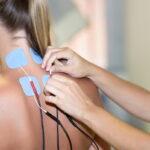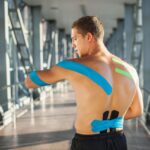Home Office Ergonomics
Creating a Healthier Home Office Environment
As remote work becomes the new normal for many professionals, the importance of an ergonomically sound home workspace has never been greater. Poor posture, inadequate furniture, and repetitive movements can all contribute to musculoskeletal pain and long-term physical issues. At Rapid Relief Medical Group, we understand how crucial your physical health is to your productivity and overall well-being. That’s why our expert physical therapists have compiled essential ergonomic tips to help you create a comfortable, health-conscious home office.
Why Ergonomics Matter
Ergonomics is the science of designing and arranging a workspace to fit the needs of the user. An ergonomically optimized setup minimizes physical stress, enhances comfort, and prevents injuries—especially to the neck, shoulders, back, wrists, and eyes. For comprehensive government guidelines on computer workstation ergonomics, you can explore OSHA’s official eTool. Inadequate ergonomic support is a leading cause of:
-
Neck and lower back pain
-
Carpal tunnel syndrome
-
Headaches and eye strain
-
Shoulder tension
-
Sciatica and postural fatigue
Rapid Relief Medical Group sees many patients who suffer from these preventable issues, and we believe education is the first step toward recovery and prevention.
1. Invest in a Supportive Chair
A high-quality ergonomic chair is one of the best investments you can make for your home office. Look for a chair with:
-
Adjustable seat height
-
Lumbar (lower back) support
-
Armrests that allow elbows to rest at a 90-degree angle
-
A seat that supports your thighs without cutting off circulation
Your feet should rest flat on the floor or on a footrest, and your knees should be at or slightly below hip level.
2. Desk and Monitor Placement
The height of your desk and monitor can significantly affect your posture. Ideally:
-
Your monitor should be at eye level, about 20–30 inches from your face
-
The top of the screen should be at or just below eye level
-
Your keyboard and mouse should be positioned so that your elbows stay close to your body and your wrists are neutral (not bent up or down)
Using a monitor riser or a stack of books to raise your screen can make a big difference.
3. Keyboard and Mouse Ergonomics
Keeping your wrists and hands in a neutral position is key to avoiding strain. Consider the following:
-
Use an ergonomic keyboard with a slight tilt to reduce wrist stress
-
Position your mouse at the same level and close to your keyboard
-
Use a mouse pad with wrist support if needed
Taking frequent breaks to stretch your fingers, hands, and wrists can also prevent overuse injuries.
4. Lighting and Eye Health
Strained eyes can lead to headaches and reduced concentration. Optimize your lighting with these tips:
-
Use natural light when possible
-
Avoid screen glare by adjusting blinds or changing your screen angle
-
Use a desk lamp with adjustable brightness for task lighting
-
Follow the 20-20-20 rule: every 20 minutes, look at something 20 feet away for 20 seconds
Rapid Relief Medical Group often treats patients who underestimate the toll poor lighting can take on their posture and overall comfort.
5. Movement is Medicine
Even the most ergonomically sound setup cannot replace movement. Prolonged sitting slows circulation, weakens muscles, and compresses spinal discs.
Our physical therapists recommend:
-
Standing up and stretching every 30–60 minutes
-
Doing neck rolls, shoulder shrugs, and spinal twists regularly
-
Taking short walks during breaks
-
Incorporating standing desks or adjustable sit-stand converters if possible
At Rapid Relief Medical Group, we emphasize that motion is lotion for your joints. Small, frequent movements throughout the day help maintain your musculoskeletal health.
6. Supportive Accessories
In addition to the basics, consider adding tools that enhance your workspace:
-
A footrest to improve circulation and reduce lower back stress
-
A headset for long phone calls to avoid cradling the phone between your shoulder and ear
-
A document holder placed next to your monitor to avoid constant neck rotation
These small changes can significantly reduce fatigue and discomfort.
7. Custom Exercises from Your PT
Everyone’s ergonomic needs are different. Our team at Rapid Relief Medical Group provides personalized physical therapy plans that include exercises and stretches tailored to your specific posture, pain areas, and work habits. Whether you’re dealing with back discomfort or wrist pain, we can help you restore function and improve strength—right from your home or in our clinic.
Start Making Changes Today
Improving your home office ergonomics doesn’t require a complete overhaul. Start small by adjusting your chair or monitor height, then gradually upgrade your setup as needed. Be mindful of how your body feels throughout the day—your body is constantly giving feedback.
If you’re already experiencing discomfort or want expert guidance on how to prevent pain before it starts, contact Rapid Relief Medical Group today. Our physical therapy specialists are here to help you stay healthy, productive, and pain-free in any workspace.
📞 Call us now at (908) 941-4762
🌐 Visit us at: https://rapidreliefpt.com/
Home Office Ergonomics | Back Pain Relief Specialist | Workplace Injury Rehabilitation













